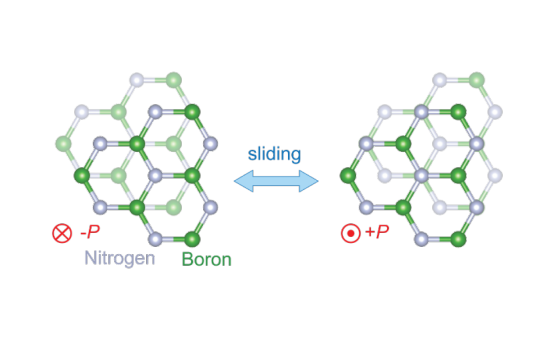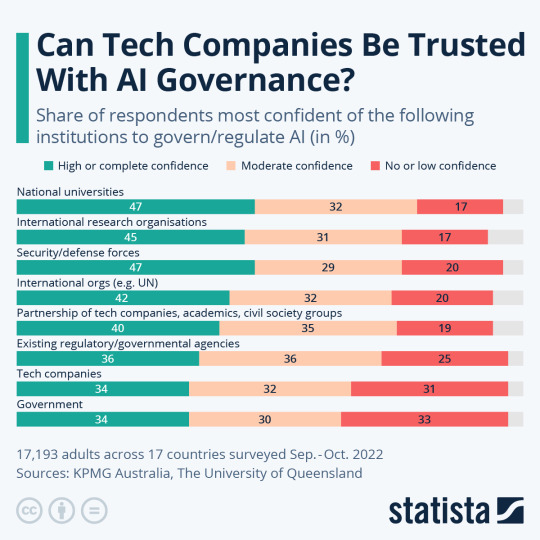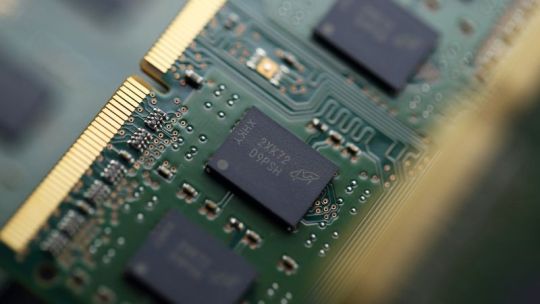#Science & Technology
Text
New method enables fast, accurate estimates of cardiovascular state to inform blood pressure management
New Post has been published on https://thedigitalinsider.com/new-method-enables-fast-accurate-estimates-of-cardiovascular-state-to-inform-blood-pressure-management/
New method enables fast, accurate estimates of cardiovascular state to inform blood pressure management


If patients receiving intensive care or undergoing major surgery develop excessively high or low blood pressures, they could suffer severe organ dysfunction. It’s not enough for their care team to know that pressure is abnormal. To choose the correct drug to treat the problem, doctors must know why blood pressure has changed. A new MIT study presents the mathematical framework needed to derive that crucial information accurately and in real time.
The mathematical approach, described in a recent open-access study in IEEE Transactions on Biomedical Engineering, produces proportional estimates of the two critical factors underlying blood pressure changes: the heart’s rate of blood output (cardiac output) and the arterial system’s resistance to that blood flow (systemic vascular resistance). By applying the new method to previously collected data from animal models, the researchers show that their estimates, derived from minimally invasive measures of peripheral arterial blood pressure, accurately matched estimates using additional information from an invasive flow probe placed on the aorta. Moreover, the estimates accurately tracked the changes induced in the animals by the various drugs physicians use to correct aberrant blood pressure.
“Estimates of resistance and cardiac output from our approach provide information that can readily be used to guide hemodynamic management decisions in real time,” the study authors wrote.
With further testing leading to regulatory approval, the authors say, the method would be applicable during heart surgeries, liver transplants, intensive care unit treatment, and many other procedures affecting cardiovascular function or blood volume.
“Any patient who is having cardiac surgery could need this,” says study senior author Emery N. Brown, the Edward Hood Taplin Professor of Medical Engineering and Computational Neuroscience in The Picower Institute for Learning and Memory, the Institute for Medical Engineering and Science, and the Department of Brain and Cognitive Sciences at MIT. Brown is also an anesthesiologist at Massachusetts General Hospital and a professor of anesthesiology at Harvard Medical School. “So might any patient undergoing a more normal surgery but who might have a compromised cardiovascular system, such as ischemic heart disease. You can’t have the blood pressure being all over the place.”
The study’s lead author is electrical engineering and computer science (EECS) graduate student Taylor Baum, who is co-supervised by Brown and Munther Dahleh, the William A. Coolidge Professor in EECS.
Algorithmic advance
The idea that cardiac output and systemic resistance are the two key components of blood pressure comes from the two-element Windkessel model. The new study is not the first to use the model to estimate these components from blood pressure measurements, but previous attempts ran into a trade-off between quick estimate updates and the accuracy of estimates; methods would either provide more erroneous estimates at every beat or more reliable estimates that are updated at minute time scales. Led by Baum, the MIT team overcame the trade-off with a new approach of applying statistical and signal processing techniques such as “state-space” modeling.
“Our estimates, updated at every beat, are not just informed by the current beat; but they incorporate where things were in previous beats as well,” Baum says. “It’s that combination of past history and current observations that produces a more reliable estimate while still at a beat-by-beat time scale.”
Notably, the resulting estimates of cardiac output and systemic resistance are “proportional,” meaning that they are each inextricably linked in the math with another co-factor, rather than estimated on their own. But application of the new method to data collected in an older study from six animals showed that the proportional estimates from recordings using minimally invasive catheters provide comparable information for cardiovascular system management.
One key finding was that the proportional estimates made based on arterial blood pressure readings from catheters inserted in various locations away from the heart (e.g., the leg or the arm) mirrored estimates derived from more invasive catheters placed within the aorta. The significance of the finding is that a system using the new estimation method could in some cases rely on a minimally invasive catheter in various peripheral arteries, thereby avoiding the need for a riskier placement of a central artery catheter or a pulmonary artery catheter directly in the heart, the clinical gold standard for cardiovascular state estimation.
Another key finding was that when the animals received each of five drugs that doctors use to regulate either systemic vascular resistance or cardiac output, the proportional estimates tracked the resulting changes properly. The finding therefore suggests that the proportional estimates of each factor are accurately reflecting their physiological changes.
Toward the clinic
With these encouraging results, Baum and Brown say, the current method can be readily implemented in clinical settings to inform perioperative care teams about underlying causes of critical blood pressure changes. They are actively pursuing regulatory approval of use of this method in a clinical device.
Additionally, the researchers are pursuing more animal studies to validate an advanced blood pressure management approach that uses this method. They have developed a closed-loop system, informed by this estimation framework, to precisely regulate blood pressure in an animal model. Upon completion of the animal studies, they will apply for regulatory clearance to test the system in humans.
In addition to Baum, Dahleh and Brown, the paper’s other authors are Elie Adam, Christian Guay, Gabriel Schamberg, Mohammadreza Kazemi, and Thomas Heldt.
The National Science Foundation, the National Institutes of Health, a Mathworks Fellowship, The Picower Institute for Learning and Memory, and The JPB Foundation supported the study.
#Anesthesia#Animals#approach#arm#arteries#author#beats#Biomedical engineering#blood#blood pressure#Brain#Brain and cognitive sciences#computer#Computer Science#data#Disease#drug#drugs#Electrical Engineering&Computer Science (eecs)#engineering#experimental#factor#Foundation#framework#gold#harvard#Health#Health care#Health sciences and technology#heart
4 notes
·
View notes
Text
Back in 1900, This Giant ‘Mammoth’ Camera Was the World’s Largest Camera
Back in 1900, This Giant ‘Mammoth’ Camera Was the World’s Largest Camera
In 1899 “The Alton Limited” train was built in Pullman, Illinois. This train was noted because of its uniform and symmetrical design. Therefore, it’s builders requested that a single panoramic photograph be taken of this exceptional train. Photographer George R. Lawrence was commissioned to take the photograph and a giant camera was built by J. A. Anderson.
The question arises as to why the…

View On WordPress
4 notes
·
View notes
Text
Why do rings form around planets?
Context: A recent study published in “Earth and Planetary Science Letters” suggests that Earth may have once had rings similar to those of Saturn.
Major highlights of the study:
Scientists from Monash University, Australia analysed 21 crater sites on Earth from the Ordovician period (488-443 million years ago) and found that all impacts occurred near the equator, which is unusual since…
0 notes
Text
OAUSTECH Releases Admission List 2024/2025
OAUSTECH, a short Name derived from Olusegun Agagu University of Science & Technology has released the admission list of 2024/2025 academic session.
All candidates that participated in the last held 2024 Post UTME screening exercise of the Institution can now check their admission status online at the admission portal.
Short-listed candidates are to note that, The payment of Admission Checker…
0 notes
Text
Shah & Anchor Kutchhi Engineering College (SAKEC), Mumbai
Detailed Review of Shah & Anchor Kutchhi Engineering College (SAKEC), Mumbai
OverviewShah & Anchor Kutchhi Engineering College (SAKEC), established in 1985, is a renowned engineering institute located in Mumbai, Maharashtra. The college is affiliated with the University of Mumbai and approved by AICTE. SAKEC offers various undergraduate and postgraduate programs in engineering and technology.…
#and AI and Data Science. The college is NAAC and NBA accredited and is AICTE approved#Electronics and Telecommunication Engineering#highlighting its commitment to high standards of education#including BTech and MTech degrees#Information Technology#SAKEC offers a range of undergraduate and postgraduate programs#Shah & Anchor Kutchhi Engineering College (SAKEC) is a prominent name among engineering colleges in Mumbai. As an autonomous institution#with specializations in fields such as Computer Engineering
0 notes
Text
अनुराग्यम ने पृथ्वी दिवस 2024 पर वैश्विक मानवतावादी तकनीकी कला और प्रदर्शनी 2024 का भव्य आयोजन किया
वैश्विक मानवतावादी तकनीकी कला और प्रदर्शनी (जी.एच.टी.ए.ई), अनुरागयम, नई दिल्ली, भारत की एक पहल है, जो हर साल पृथ्वी दिवस के अवसर पर पर्यावरण और विज्ञान से संबंधित कई जागरूकता गतिविधियों और प्रतियोगिताओं का आयोजन करता है। जागरूकता गतिविधियों और प्रतियोगिताओं में ड्राइंग और पेंटिंग, एलोक्यूशन कम एक्सटेम्पोर, डिबेट, स्लोगन राइटिंग, ट्री प्लांटिंग, पिक अप लिटर, साइकिल रैली, मैराथन और विशेषज्ञ…

View On WordPress
0 notes
Text
Proteomics: Advancements and Applications in Forensic Science
Proteomics, the study of proteins and their interactions, is an emerging field of science that holds immense potential in understanding and managing various diseases. By analyzing the structure, function, abundance, and interactions of proteins…
Introduction
Proteomics, the study of proteins and their interactions, is an emerging field of science that holds immense potential in understanding…

View On WordPress
#Education#Forensic Protocols#forensic science#forensics#industrial automation#parasites#parasitic interactions#Proteomics#relationships#Science & Technology
0 notes
Text
Climate change: World's hottest day since records began
The world’s average temperature reached a new high on Monday 3 July, topping 17 degrees Celsius for the first time.
US researchers said the new record was the highest in any instrumental record dating back to the end of the 19th century.
Scientists believe a combination of a natural weather event known as El Niño and mankind’s ongoing emissions of carbon dioxide are driving the heat.
Last month…

View On WordPress
0 notes
Text
New transistor’s superlative properties could have broad electronics applications
New Post has been published on https://thedigitalinsider.com/new-transistors-superlative-properties-could-have-broad-electronics-applications/
New transistor’s superlative properties could have broad electronics applications


In 2021, a team led by MIT physicists reported creating a new ultrathin ferroelectric material, or one where positive and negative charges separate into different layers. At the time they noted the material’s potential for applications in computer memory and much more. Now the same core team and colleagues — including two from the lab next door — have built a transistor with that material and shown that its properties are so useful that it could change the world of electronics.
Although the team’s results are based on a single transistor in the lab, “in several aspects its properties already meet or exceed industry standards” for the ferroelectric transistors produced today, says Pablo Jarillo-Herrero, the Cecil and Ida Green Professor of Physics, who led the work with professor of physics Raymond Ashoori. Both are also affiliated with the Materials Research Laboratory.
“In my lab we primarily do fundamental physics. This is one of the first, and perhaps most dramatic, examples of how very basic science has led to something that could have a major impact on applications,” Jarillo-Herrero says.
Says Ashoori, “When I think of my whole career in physics, this is the work that I think 10 to 20 years from now could change the world.”
Among the new transistor’s superlative properties:
It can switch between positive and negative charges — essentially the ones and zeros of digital information — at very high speeds, on nanosecond time scales. (A nanosecond is a billionth of a second.)
It is extremely tough. After 100 billion switches it still worked with no signs of degradation.
The material behind the magic is only billionths of a meter thick, one of the thinnest of its kind in the world. That, in turn, could allow for much denser computer memory storage. It could also lead to much more energy-efficient transistors because the voltage required for switching scales with material thickness. (Ultrathin equals ultralow voltages.)
The work is reported in a recent issue of Science. The co-first authors of the paper are Kenji Yasuda, now an assistant professor at Cornell University, and Evan Zalys-Geller, now at Atom Computing. Additional authors are Xirui Wang, an MIT graduate student in physics; Daniel Bennett and Efthimios Kaxiras of Harvard University; Suraj S. Cheema, an assistant professor in MIT’s Department of Electrical Engineering and Computer Science and an affiliate of the Research Laboratory of Electronics; and Kenji Watanabe and Takashi Taniguchi of the National Institute for Materials Science in Japan.
What they did
In a ferroelectric material, positive and negative charges spontaneously head to different sides, or poles. Upon the application of an external electric field, those charges switch sides, reversing the polarization. Switching the polarization can be used to encode digital information, and that information will be nonvolatile, or stable over time. It won’t change unless an electric field is applied. For a ferroelectric to have broad application to electronics, all of this needs to happen at room temperature.
The new ferroelectric material reported in Science in 2021 is based on atomically thin sheets of boron nitride that are stacked parallel to each other, a configuration that doesn’t exist in nature. In bulk boron nitride, the individual layers of boron nitride are instead rotated by 180 degrees.
It turns out that when an electric field is applied to this parallel stacked configuration, one layer of the new boron nitride material slides over the other, slightly changing the positions of the boron and nitrogen atoms. For example, imagine that each of your hands is composed of only one layer of cells. The new phenomenon is akin to pressing your hands together then slightly shifting one above the other.
“So the miracle is that by sliding the two layers a few angstroms, you end up with radically different electronics,” says Ashoori. The diameter of an atom is about 1 angstrom.
Another miracle: “nothing wears out in the sliding,” Ashoori continues. That’s why the new transistor could be switched 100 billion times without degrading. Compare that to the memory in a flash drive made with conventional materials. “Each time you write and erase a flash memory, you get some degradation,” says Ashoori. “Over time, it wears out, which means that you have to use some very sophisticated methods for distributing where you’re reading and writing on the chip.” The new material could make those steps obsolete.
A collaborative effort
Yasuda, the co-first author of the current Science paper, applauds the collaborations involved in the work. Among them, “we [Jarillo-Herrero’s team] made the material and, together with Ray [Ashoori] and [co-first author] Evan [Zalys-Geller], we measured its characteristics in detail. That was very exciting.” Says Ashoori, “many of the techniques in my lab just naturally applied to work that was going on in the lab next door. It’s been a lot of fun.”
Ashoori notes that “there’s a lot of interesting physics behind this” that could be explored. For example, “if you think about the two layers sliding past each other, where does that sliding start?” In addition, says Yasuda, could the ferroelectricity be triggered with something other than electricity, like an optical pulse? And is there a fundamental limit to the amount of switches the material can make?
Challenges remain. For example, the current way of producing the new ferroelectrics is difficult and not conducive to mass manufacturing. “We made a single transistor as a demonstration. If people could grow these materials on the wafer scale, we could create many, many more,” says Yasuda. He notes that different groups are already working to that end.
Concludes Ashoori, “There are a few problems. But if you solve them, this material fits in so many ways into potential future electronics. It’s very exciting.”
This work was supported by the U.S. Army Research Office, the MIT/Microsystems Technology Laboratories Samsung Semiconductor Research Fund, the U.S. National Science Foundation, the Gordon and Betty Moore Foundation, the Ramon Areces Foundation, the Basic Energy Sciences program of the U.S. Department of Energy, the Japan Society for the Promotion of Science, and the Ministry of Education, Culture, Sports, Science and Technology (MEXT) of Japan.
#2-D#affiliate#applications#atom#atoms#author#billion#boron nitride#career#Cells#change#chip#collaborative#computer#computer memory#Computer Science#Computer science and technology#computing#education#electric field#Electrical Engineering&Computer Science (eecs)#electricity#Electronics#energy#engineering#flash#Foundation#Fundamental#Future#green
2 notes
·
View notes
Text
Моторизованные роликовые коньки 1960-х годов
Самоходные коньки, выпускавшиеся компанией Motorized Roller Skate Company из Детройта, начиная с 1956 года. Компания была основана в 1955 году неугомонным изобретателем из Линкольн-Парка, штат Мичиган, по имени Антонио Пиррелло. Эти коньки, продававшиеся в розницу по цене 250 долларов, что в условиях современной экономики составляет 2300 долларов, оснащены 19-фунтовым бензиновым мотором,…

View On WordPress
#1960s#event & history#inventions#science & technology#skating#traffic & transport#USA#Vintage
0 notes
Text
Who do you Trust with Governing A.I.?
Surveying over 17,000 people across 17 countries, a study conducted by KPMG Australia and the University of Queensland shows the general public of many nation do not trust government institutions to oversee the development and implementation of artificial intelligence.
Only one third of respondents had “high or complete confidence” in governments regarding the regulation and governance of AI…

View On WordPress
0 notes
Text
Starlink satellites
Context: A recent study published in ‘Astronomy & Astrophysics’ reveals that Elon Musk’s Starlink satellites are disrupting the work of astronomers. Experts argue that this growing issue underscores the urgent need for regulations governing satellite operators, similar to those in place for controlling radio pollution from ground-based sources like cell-phone towers.
The impact of Starlink…
0 notes
Text
China imposes sales restrictions on Micron as it escalates tech battle with Washington | CNN Business
Hong Kong
CNN
—
China has banned Chinese companies working on key infrastructure projects from buying products from US semiconductor manufacturer Micron, in a major escalation of an ongoing battle between the world’s top two economies over access to crucial technology.
The Cyberspace Administration of China announced the decision on Sunday, saying the US chip maker had failed to pass a…

View On WordPress
#asia#business#business and industry sectors#china#computer equipment#computer science and information technology#consumer products#continents and regions#domestic alerts#domestic-business#domestic-international news#east asia#economy and trade#iab-business and finance#iab-computing#iab-industries#iab-technology & computing#iab-technology industry#international alerts#international-business#north america#semiconductors#technology#the americas#united states
0 notes
Text
The Role of Cybersecurity in Building Trust with Customers and Investors | Entrepreneur
Opinions expressed by Entrepreneur contributors are their own.
The number of cyber attacks launched each year is growing rapidly. Data shows that in 2019, up to 60% of small businesses went bankrupt and had to shut down within six months after falling victim to cyberattacks.
Everything suggests these numbers will only grow. The digitized world presents many opportunities but also risks.…
View On WordPress
#Business Solutions#Cybersecurity#Data & Recovery#Devices#investors#Managing Teams#Productivity#Science & Technology#Technology#Trust
0 notes
Text
GHTAE 2024 Day 3 Schedule For Expert Talk On 22nd April, 2024 at 5 PM to Celebrate Earth Day
Let’s celebrate Earth Day with Anuragyam Science and Technology. Anuragyam is organizing Global Humanitarian Techno and Art Exhibition (GHTAE 2024) on the occasion of Earth Day 2024. Registration is open from today. There are lots of awareness activities, competitions and exhibitions. This is a wonderful opportunity to win fabulous prizes. All the participants will get an E – Certificate.
Day 3…

View On WordPress
0 notes